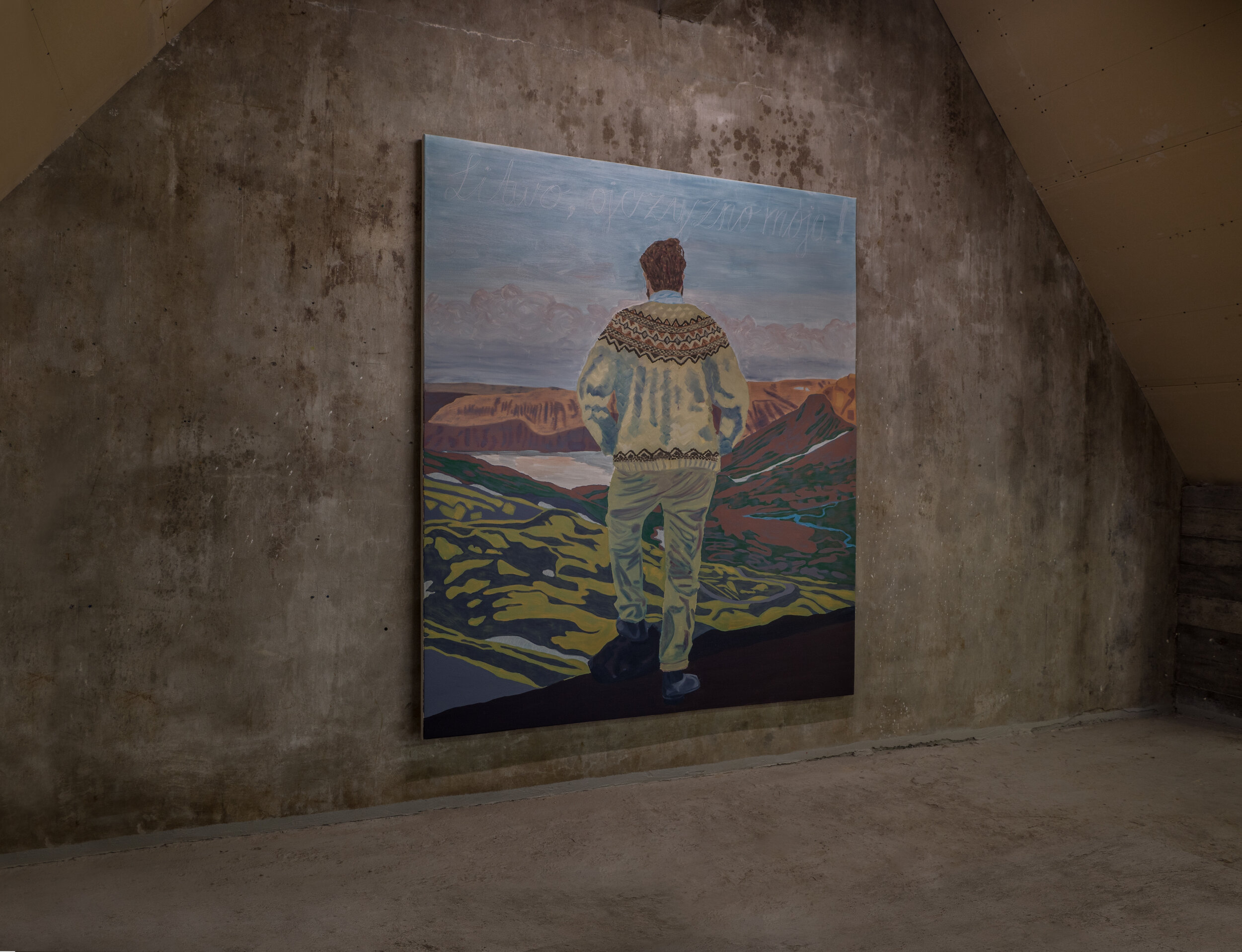Lithuania, my fatherland!, 210x180 cm, oil on linen, 2020
The title of the painting is derived from the first three words of the first verse of the epic poem Pan Tadeusz by Adam Mickiewicz (1798 - 1855). From the perspective of someone from Lithuania or Poland the verse immediately signals the complexity of national identity: Although Mickiewicz was ethnicallyBelarusian, the political boundary lines of his birthplace shifted over time between Poland, Lithuania and Belarus. Complicating matters, he wrote in Polish. He is therefore claimed as the national poet of Poland, Lithuania, and Belarus.
Mickiewicz was forced to emigrate from the Russian Empire for political reasons, spending much of his life in Paris. Movements to establish an independent Polish state were suppressed by the Tsar. He died in Istanbul after forming a Polish Legion that was supposed to fight for independence.
In the end, Mickiewicz’s fatherland remained an ideal. He did not live to see an independent Polish or Lithuanian state.
The idea of belonging to a particular ethnicity or homeland as defined by political boundaries, language, and culture underlies the meaning of this painting. I was born in Germany of Polish parents and grew up bilingual. Although I visited Poland often, it was always incomprehensible; I may know its culture, history and language, but the cultural code remains elusive. Now, I find myself a resident of Iceland, seeking to comprehend its culture and language.
The painting is an homage to Caspar David Friedrich’s The Wanderer, 1818, though the context is of my gazing at the landscape of my adopted home, my Wahlheimat.



